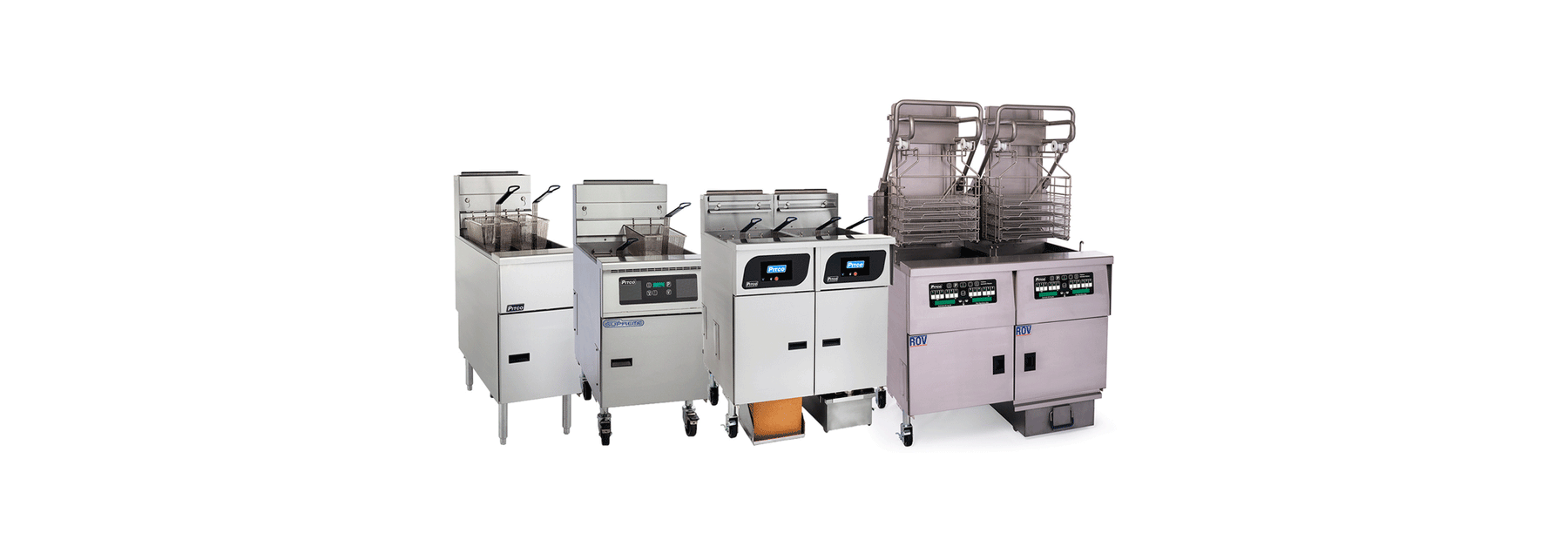
Selecting the Right Fryer.
Fryers are a staple in many kitchens, from fast-food restaurants to fine dining establishments. They come in various types, each with their own unique features and benefits. In this blog, we will explore different types of fryers, including their pros and cons.
-
Tube Fryer Tube fryers are designed for high-volume cooking and quick recovery time. They use a series of tubes to heat the oil, providing even cooking and minimal oil usage.
Cons: More expensive than other fryers, requires specialized maintenance.
-
Open-Pot Fryer Open-pot fryers are the most common type of fryer and are often used in fast-food restaurants and other high-volume establishments. These fryers have an open vat in which food is placed, and the oil is heated with a heating element located beneath the vat.
Pros: Widely available, easy to use, easy to clean, affordable.
Cons: Heat is not evenly distributed, requires more oil, longer recovery time.
-
Flat Bottom Fryer Flat bottom fryers are similar to open-pot fryers, but the heating element is located underneath a flat surface, allowing for more even heat distribution. These fryers are ideal for cooking delicate items like fish and chips.
Pros: Even heat distribution, better for delicate items, easy to clean.
Cons: Limited in capacity, may require more frequent oil changes.
-
Ribbon Frypot Fryer Ribbon frypot fryers use a ribbon element to heat the oil, providing even heat distribution and quick recovery time. They are often used for cooking large quantities of food and are ideal for high-volume operations.
Pros: Even heat distribution, quick recovery time, high-volume cooking.
Cons: More expensive than other fryers, requires specialized maintenance.
-
Pressure Fryers Pressure fryers are designed to cook food under pressure, which reduces cooking time and allows for the use of lower cooking temperatures. These fryers are often used to cook chicken and other breaded items and are popular in quick-service restaurants.
Pros: Quick cooking time, lower cooking temperatures, more energy-efficient.
Cons: More expensive than other fryers, specialized maintenance required.
-
Ventless Fryers Ventless fryers are designed for smaller operations that do not have the space or resources for a traditional fryer. These fryers use a combination of radiant heat and convection to cook food, and they do not require a vent hood or external exhaust system.
Pros: Space-saving, energy-efficient, no need for ventilation system.
Cons: Higher initial cost, limited in capacity, may not be suitable for high-volume cooking.
In conclusion, choosing the right type of fryer depends on your specific needs and requirements. Whether you are running a high-volume operation or a smaller kitchen, there is a fryer that will suit your needs. Consider the pros and cons of each type of fryer, as well as the cost of ownership and maintenance requirements, before making your purchase decision. With the right fryer, you can efficiently and effectively cook a variety of foods, making your kitchen a success.
